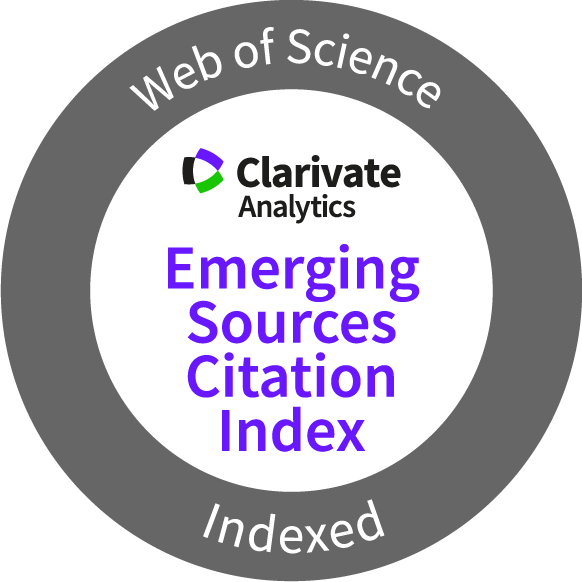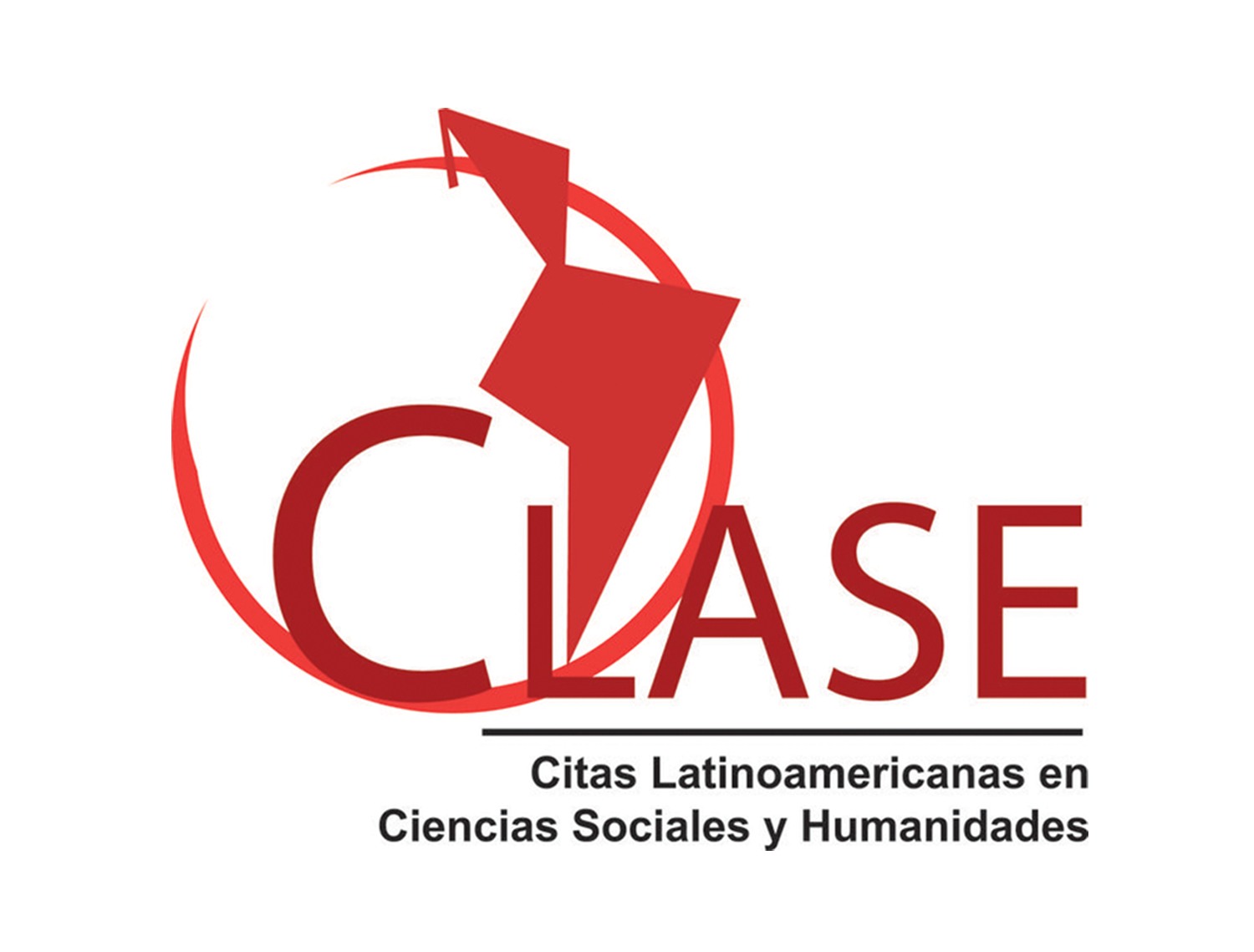Professional Hispano-Americans in China
Influence of Chinese Soft Power on Immigration Motivation
DOI:
https://doi.org/10.22234/recu.20231101.e759Keywords:
immigration, China, Latin America, educational institutions, motivationAbstract
Professional Hispano-American immigrants without Chinese ancestry or cultural ties with this country have chosen it as their migratory destination, a topic that remains understudied. The objective is to comprehend their motivations, and to achieve this, 19 men and 6 women participated in in-depth interviews and surveys. It was observed that, especially for Generation Y, destination selection transcends economic factors, influenced by Chinese soft power through media and education. These mediums serve as intercultural bridges; at the meso-social level, prior to migration, connecting macrostructural conditions with the individual decision-making. Furthermore, it became evident that those influences are less relevant for the previous generation, emphasizing the importance of generational change. We argue that the individualized consumption of cultural products individualizes motivations and supports decision-making.
Downloads
References
Beck, U. and Beck-Gernsheim, E. (2002). Individualization: Institutionalized Individualism and its Social and Political Consequences. London: SAGE Publications Ltd. https://doi.org/10.4135/9781446218693
Biswas, A. & Hartley, K. (2017). China’s soft power struggles. Asia and the Pacific Policy Society.
Bourdieu, P. (1993). The Field of Cultural Production. Columbia University Press, Chicago.
Cai, X. & Su, X. (2021). Dwelling-in-travelling: Western Expats and the Making of Temporary Home in Guangzhou, China. Journal of Ethnic and Migration Studies, 47(12), 2815-2832. https://doi.org/10.1080/1369183X.2020.1739392
Carling, J. & Haugen, H. (2021). Circumstantial Migration: How Gambian Journeys to China Enrich Migration Theory. Journal of Ethnic and Migration Studies, 47(12), 2778-2795. https://doi.org/10.1080/1369183X.2020.1739385
Colic‐Peisker, V. (2010). Free floating in the cosmopolis? Exploring the identity‐belonging of transnational knowledge workers. Global networks, 10(4), 467-488. https://doi.org/10.1111/j.1471-0374.2010.00298.x
Confucius Institute Maryland. (2018). FAQ: When was CIM established? Archivado el 16 de julio 2019. https://web.archive.org/web/20190716201840/http://globalmaryland.umd.edu/offices/confucius-institute-maryland/frequently-asked-questions
Cranston, S. (2016). Imagining global work: Producing understandings of difference in ‘easy Asia’. Geoforum, 70, 60-68. https://doi.org/10.1016/j.geoforum.2016.02.008
Cuadrado, M. y Berenguer, G. (2002). El Consumo de Servicios Culturales. ESIC Editorial.
Etikan, I.; Musa, S. & Alkassim, R. (2016). Comparison of convenience sampling and purposive sampling. American journal of theoretical and applied statistics, 5(1), 1-4. https://doi.org/10.11648/j.ajtas.20160501.11
Feng, D.; Zhu, H. & Wang, Y. (2021). Agency and Mobility in the Context of Development-Induced Migration: The Case of Three Gorges Out-Migrants. Journal of Ethnic and Migration Studies, 47(12), 2745-2759. https://doi.org/10.1080/1369183X.2020.1739375
Flores, Á. (2013). ¿K-pop, nueva opición de identidad peruana? —Perú. Comuni@ccion: Revista de Investigación en Communicación y Desarrollo, 4(1), 38-45.
Ford, W. (2022). How Far Does China’s Influence at U.S. Universities Go? One Student Tried to Find Out. POLITICO. https://www.politico.com/news/magazine/2022/04/24/confucius-institutes-china-new-mexico-00027287
Gao, Q. (2021). Reconstituting the Neoliberal Subjectivity of Migrants: Christian Theo-Ethics and Migrant Workers in Shenzhen, China. Journal of Ethnic and Migration Studies, 41(12), 2725-2744. https://doi.org/10.1080/1369183X.2020.1739374
García, N. (1999). El consumo cultural: una propuesta teórica. El consumo cultural en América Latina. Construcción teórica y líneas de investigación, 2, 72-95.
García, N. (2012). Consumidores y ciudadanos: Conflictos multiculturales de la globalización. Barcelona: Grijalbo, Debolsillo.
Gómez, D. (2013). China y su relación con América Latina. Una aproximación desde el poder blando. En J. Martínez, América Latina y El Caribe – China: Relaciones Políticas e Internacionales 2013. Universidad Nacional Autónoma de México, Facultad de Economía, Centro de Estudios China-México. Editores Buena Onda, S.A.
Hartig, F. (2015). Communicating China to the world: Confucius Institutes and China’s strategic narratives. Politics, 35(3-4), 245-258. https://doi.org/10.1111/1467-9256.12093
Hernández, C. (2013). Las relaciones entre China y Latinoamérica en la década de los 2010. En J. Martínez, América Latina y El Caribe – China: Relaciones Políticas e Internacionales 2013. Universidad Nacional Autónoma de México, Facultad de Economía, Centro de Estudios China-México. Editores Buena Onda, S.A.
Higuchi, N. (2002). Kokusai imin ni okeru mezoreberu no ichiduke: makuro-mikuro moderu wo koete [The Role of Meso-Link in International Migration: Beyond the Macro-Micro Model]. Shakaigaku Hyōron, 52(4), 558-72. https://doi.org/10.4057/jsr.52.558
Huang, J. (2010). Conceptualizing Chinese Migration and Chinese Overseas: The Contribution of Wang Gungwu. Journal of Chinese Overseas, 6(1), 1-21.
IOM. (2022). World Migration Report 2022. International Organization for Migration (IOM), McAuliffe, M. y A. Triandafyllidou eds. https://doi.org/10.18356/9789292680763
Ishikawa, Y. (2013). Jinkō idō [Population Movements]. En Jinbunchirigaku jitten [Human Geography Encyclopedia] (pp. 566-568). The Human Geographical Society of Japan. Maruzen Publishing.
Japanese Sociological Society (JSS) (2008). Code of Ethics. https://jss-sociology.org/about/ethicalcodes/
Jordan, L.; Hoang, A.; Chui, C.; Wang, W. & Mazzucato. V. (2021). Multiple Precarity and Intimate Family Life among African-Chinese Families in Guangzhou. Journal of Ethnic and Migration Studies, 47(12), 2796-2814. https://doi.org/10.1080/1369183X.2020.1739390
King, R. & Wood, N. (2013). Media and Migration: Constructions of Mobility and Difference. Routledge.
Lahtinen, A. (2015). China’s soft power: Challenges of Confucianism and Confucius Institutes. Journal of Comparative Asian Development, 14(2), 200-226. https://doi.org/10.1080/15339114.2015.1059055
Li, W.; Lo, L.; Lu, Y.; Tan, Y. & Lu, Z. (2021). Intellectual Migration: Considering China. Journal of Ethnic and Migration Studies, 47(12), 2833-2853. https://doi.org/10.1080/1369183X.2020.1739393
Liu, Y.; Li, Z.; Liu, Y. & Chen, H. (2015). Growth of Rural Migrant Enclaves in Guangzhou, China: Agency, Everyday Practice and Social Mobility. Urban Studies, 52(16), 3086-3105. https://doi.org/10.1177/0042098014553752
Maeda, H. (2006). The Social Integration of Nikkei Brazilian Immigrants: A Japanese Case Study. University of Minnesota.
McGregor, E. & Siegel, M. (2013). Social Media and Migration Research. United Nations University - Maastricht Economic and Social Research Institute on Innovation and Technology (MERIT).
Mellenbergh, G. (2008). Chapter 10: Tests and Questionnaires: Construction and Administration. En Hermanus J., Advising on Research Methods: A consultant’s companion (pp. 211-236). The Netherlands: Johannes van Kessel Publishing.
Novella, R.; Repetto, A.; Robino, C. y Rucci, G. (2018). Millennials en América Latina y el Caribe: ¿Trabajar o estudiar? IDRC: Inter-American Development Bank. http://dx.doi.org/10.18235/0001410
Nye, J. (2004). Soft Power: The Means to Success in World Politics. Traducción de Yoichi Yamaoka. Nikkei BP Marketing Inc.
Ong, A. (2011). Introduction: Worlding Cities, or the Art of Being Global. En Ananya R. & Aihwa O. Worlding Cities: Asian Experiments and the Art of Being Global (pp. 1-26). Oxford, UK: Wiley- Blackwell. https://doi.org/10.1002/9781444346800.ch
Park, J. (2013). Cultural artefact, ideology export or soft power? Confucius Institute in Peru. International Studies in Sociology of Education, 23, 1-16. https://doi.org/10.1080/09620214.2013.770205
Piffaut, M. (2020a). Iminsha dōshi no aidentiti kōchiku katei ni okeru shakō: Kansai chihō ni kyoju suru isupanoamericajin no jirei ni chakumokushite [Sociabilty in the identity building process among immigrants: Focusing on the case of Hispano-Americans living in the Kansai region] (Tesis de Master). Kyoto University, Graduate School of Education.
Piffaut, A. (2020b). Nihon ni okeru isupanoamerikajin nipponbunka fan no jissen to aidentiti―fan bunka no naibu-tekina bunri to kyōtsū-ten no jirei― [Identity and Practice of Hispanoamerican Fans of Japanese Culture in Japan―A Case of Separation and Common points within Fan Culture―]. Kyōiku shakai bunka: Kenkyū kiyō, 20, 29-48. https://repository.kulib.kyoto-u.ac.jp/dspace/bitstream/2433/250844/1/sse_020_029.pdf
Piffaut M. (2023). Zainichi hi nikkei isupanoamerika hito no burakkuyūmoa― toransunashonaruna shakai-teki sōgo sayō e no eikyō― [Black Humor among Non-Nikkei Hispano-Americans in Japan: Its Influence on Transnational Social Interactions]. Kyōiku shakai bunka: Kenkyū kiyō, 23 (pp. 1-13). https://repository.kulib.kyotou.ac.jp/dspace/bitstream/2433/279546/1/sse_023_001.pdf
Procopio, M. (2015). The effectiveness of Confucius Institutes as a tool of China’s soft power in South Africa. African East-Asian Affairs (1-2). https://doi.org/10.7552/0-1-2-155
Pun, N. (2016). Migrant Labor in China: Post-Socialist Transformations. Cambridge: Polity.
Qi, J. (2021). How China has been transforming international education to become a leading host of students. The Conversation. https://theconversation.com/how-china-has-been-transforming-international-education-to-become-a-leading-host-of-students-157241
Qian, J. & Florence, E. (2021). Migrant Worker Museums in China: Public Cultures of Migrant Labour in State and Grassroots Initiatives. Journal of Ethnic and Migration Studies, 47(12), 2706-2724. https://doi.org/10.1080/1369183X.2020.1739373
Ramírez, L.; Miranda, V. & Hernández, M. (2020). Más allá del comercio: análisis del poder blando de la República Popular China y estrategias implementadas en América Latina y Colombia. Artículo elaborado como requisito de grado del Programa de Negocios Internacionales de la Institución Universitaria Esumer.
Ryan, R. & Deci, E. (2000). Intrinsic and extrinsic motivations: Classic definitions and new directions. Contemporary educational psychology, 25(1), 54-67. https://doi.org/10.1006/ceps.1999.1020
Sekiguchi, T. (2005). Zainichi nikkei shitei no kyōiku to nihon'nogakkō: Jinzai ikusei shisutemu no shiten kara [Education of Nikkei Children in Japan and Japanese Schools: From the Perspective of Human Resource Development System]. Kikan Kaigai nikkeijin, 57, 25-30. Kaigai nikkeijin kyōkai.
Serres, M. (2014). Thumbelina: The Culture and Technology of Millennials. Rowman & Littlefield.
Strauss, A. & Corbin, J. (1990). Basics of qualitative research: Grounded theory procedures and techniques. Sage.
Sun, W. (2014). Subaltern China: Rural Migrants, Media and Cultural Practices. Rowman & Littlefield.
Sunkel, G. (2002). Una mirada otra. La cultura desde el consumo. Estudios y otras prácticas intelectuales latinoamericanas en cultura y poder, 287-294.
Takenaka, A. (2005). Paradoxes of ethnicity-based immigration: Peruvian and Japanese-Peruvian migrants in Japan. En Roger G.; Ceri P.; Ayumi T. & Paul W. Global Japan: The Experience of Japan’s New Immigrant and Overseas Communities (pp. 234-248). Routledge. https://doi.org/10.4324/9780203986783
Taylor, S.; Bogdan, R. & DeVault, M. (2015). Introduction to Qualitative Research Methods: A Guidebook and Resource. John Wiley & Sons.
Torres, R. (2016). Sobre el concepto de América Latina ¿Invención francesa? Cahiers d’études romanes. Revue du CAER, 32, 89-98. https://doi.org/10.4000/etudesromanes.5141
Tsakiri, E. (2005). Transnational communities and identity. Refugee survey quarterly, 24(4), 102-104. https://doi.org/10.1093/rsq/hdi090
Tsuda, T. (2022). Racism without racial difference? Co-ethnic racism and national hierarchies among Nikkeijin ethnic return migrants in Japan. Ethnic and Racial Studies, 45(4), 595-615. https://doi.org/10.1080/01419870.2021.1993296
UN DESA. (1998). United Nations, Department of Economic and Social Affairs. Recommendations on Statistics of International Migration, Revision 1. p. 10.
Urbanski, E. (1978). Hispanic America and Its Civilization: Spanish Americans and Anglo-Americans. University of Oklahoma Press.
Verger, A. (2013). Políticas de mercado, Estado y universidad: hacia una conceptualización y explicación del fenómeno de la mercantilización de la educación superior. Revista de educación, 360, 268-291.
Viola, L. & Musolff, A. (2019). Migration and Media: Discourses about Identities in Crisis. John Benjamins Publishing Company.
Voicu, M. (2011). Using the Snowball Method in Marketing Research on Hidden Populations. Challenges of the Knowledge Society, 1: 1341-1351.
Wang, S. (2018). 国际汉语教师如何讲好中国故事. People's Daily (en chino). http://media.people.com.cn/n1/2018/0802/c40628-30192367.html
Yamanaka, K. (1996). Return Migration of Japanese-Brazilians to Japan: The Nikkeijin as Ethnic Minority and Political Construct. Diaspora: A Journal of Transnational Studies, 5(1), 65-97. https://doi.org/10.1353/dsp.1996.0002
Yang, T. (2004). Tisheng Zhongguo Ruanshili: Jiedu Zhongyang Zhengzhijiu Di Shisanci Jiti Xuexi. Liaowang Xin-wen Zhoukan, 23(7), 14-15.
Yellinek, R.; Mann, Y. & Lebel, U. (2021). Chinese ‘Soft Power Pipelines Diffusion’(SPPD) to the Middle Eastern Arab Countries 2000-2018: A Discursive-Institutional Study. British Journal of Middle Eastern Studies, 48(5), 941-959. https://doi.org/10.1080/13530194.2020.1732870
Zhōngguó guójì yímín bàogào. (2020). Reporte sobre la migración internacional en China 2020. Editor en jefe: Wang Huiyao. Shèhuì kēxué wénxiàn chūbǎn shè.
Published
How to Cite
Issue
Section
License
Copyright (c) 2023 Marcelo Alejandro Piffaut Gálvez

This work is licensed under a Creative Commons Attribution 4.0 International License.
Culturales journal allows you to share, copy and redistribute the material in any medium or format; adapt, remix, transform, and build upon the material for any purpose, including commercially, by properly crediting the work and providing a link to the license indicating whether changes have been made.
Culturales journal is licensed under the Creative Commons Attribution 4.0 International License (CC BY 4.0)























